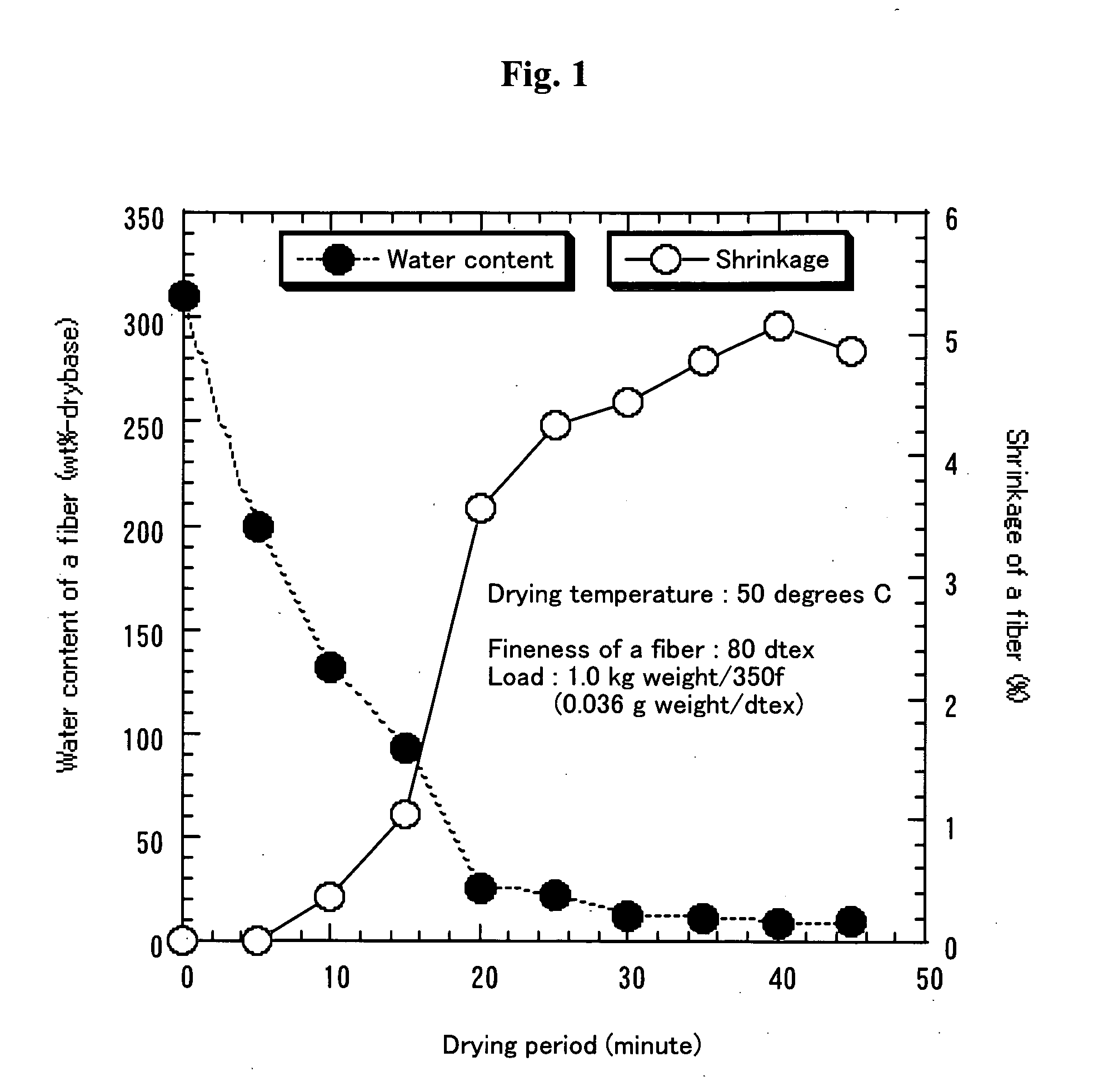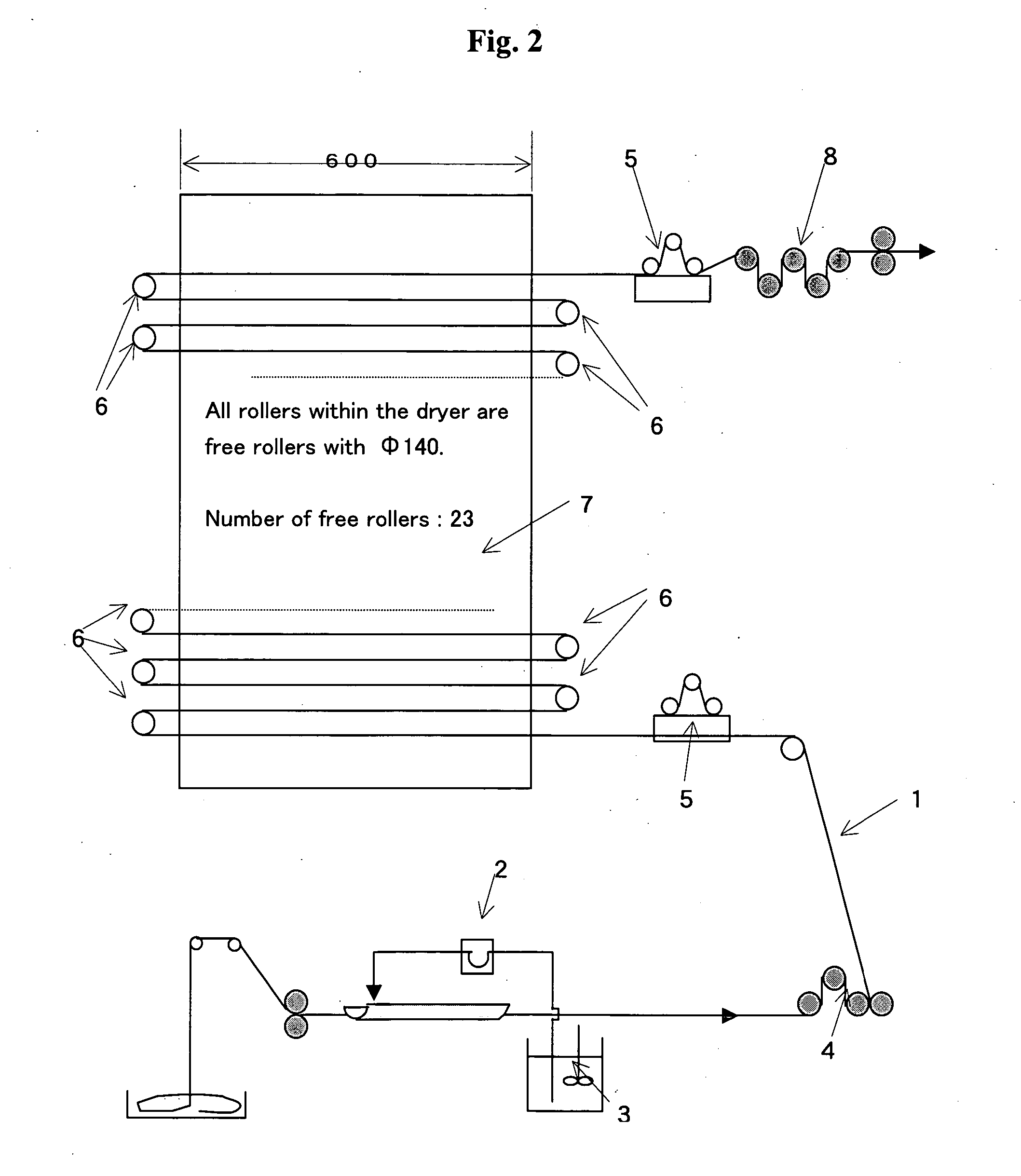Manufacturing method and continuous drying apparatus for head decorating regenerated collagen fiber
- Summary
- Abstract
- Description
- Claims
- Application Information
AI Technical Summary
Benefits of technology
Problems solved by technology
Method used
Image
Examples
example 2
[0050] Experiment was conducted in a same manner as in Example 1 except for having changed a count of twists of 0.5 twists / m into 1.0 twists / m. As a result, fiber shrinkage gave 7% and a number of fluff (fiber breakage) and hackling loss rate exceeded acceptance criteria, and curl retentive property was also satisfactory.
example 3
[0051] Experiment was conducted in a same manner as in Example 1 except for having changed a count of twists of 0.5 twists / m into 0.25 twists / m. As a result, fiber shrinkage gave 7%. Convergence of the fiber bundle was inferior as compared with Example 1, a number of fluff (fiber breakage) gave 30 times and a hackling loss rate increased to 0.3%, a number of fluff and a hackling loss rate exceeded acceptance criteria, and curl retentive property was also satisfactory.
example 4
[0052] Experiment was conducted in a same manner as in Example 1 except for having changed a drying temperature of 65 degree C. into 50 degree C. As a result, fiber shrinkage gave 5%. A number of fluff (fiber breakage) and a hackling loss rate exceeded acceptance criteria, and curl retentive property was also satisfactory.
PUM
| Property | Measurement | Unit |
|---|---|---|
| Mass | aaaaa | aaaaa |
| Mass | aaaaa | aaaaa |
| Ratio | aaaaa | aaaaa |
Abstract
Description
Claims
Application Information
 Login to View More
Login to View More - R&D
- Intellectual Property
- Life Sciences
- Materials
- Tech Scout
- Unparalleled Data Quality
- Higher Quality Content
- 60% Fewer Hallucinations
Browse by: Latest US Patents, China's latest patents, Technical Efficacy Thesaurus, Application Domain, Technology Topic, Popular Technical Reports.
© 2025 PatSnap. All rights reserved.Legal|Privacy policy|Modern Slavery Act Transparency Statement|Sitemap|About US| Contact US: help@patsnap.com



